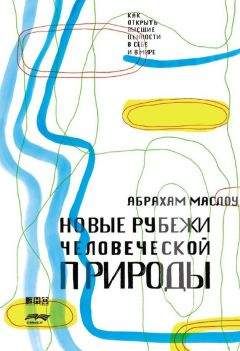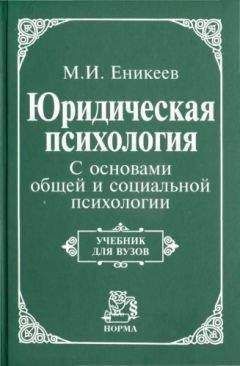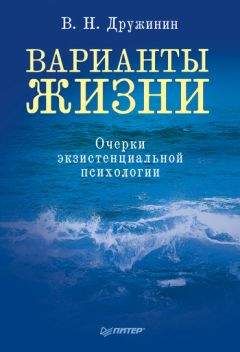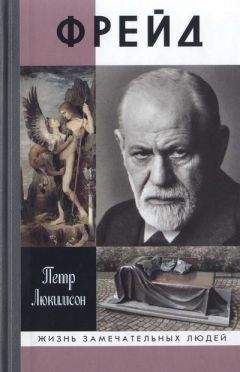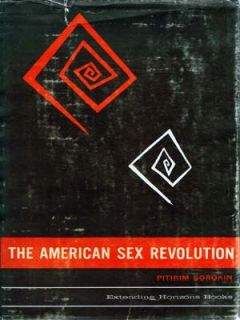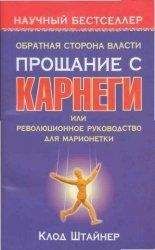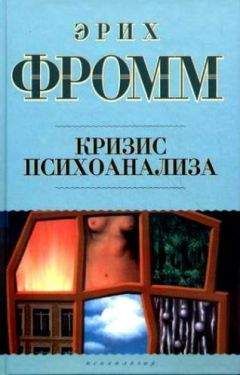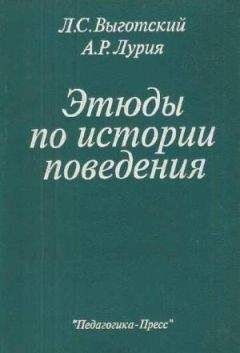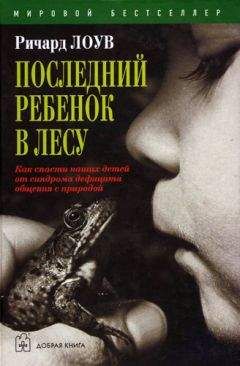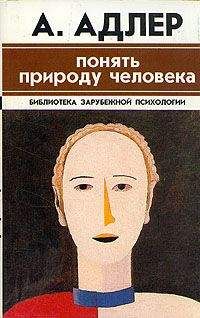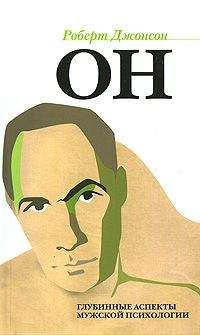Марк Хаузер - Мораль и разум. Как природа создавала наше универсальное чувство добра и зла
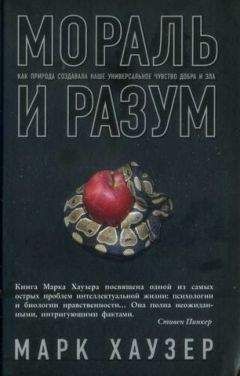
Скачивание начинается... Если скачивание не началось автоматически, пожалуйста нажмите на эту ссылку.
Жалоба
Напишите нам, и мы в срочном порядке примем меры.
Описание книги "Мораль и разум. Как природа создавала наше универсальное чувство добра и зла"
Описание и краткое содержание "Мораль и разум. Как природа создавала наше универсальное чувство добра и зла" читать бесплатно онлайн.
В книге известного американского ученого Марка Хаузера утверждается, что люди обладают врожденным моральным инстинктом, действующим независимо от их пола, образования и вероисповедания. Благодаря этому инстинкту, они могут быстро и неосознанно выносить суждения о добре и зле. Доказывая эту мысль, автор привлекает многочисленные материалы философии, лингвистики, психологии, экономики, социальной антропологии и приматологии, дает подробное объяснение природы человеческой морали, ее единства и источников вариативности, прослеживает пути ее развития и возможной эволюции. Книга имела большой научный и общественный резонанс в США и других странах. Перевод с английского Т. М. Марютиной Научный редактор перевода Ю. И. Александров
Thompson С, Barresi J. & Moore С. (1997). The development of future-oriented prudence and altruism in preschoolers // Cognitive Development, /2, 199—212.
Thomson J.J. (1970). Individuating actions //Journal of Philosophy, 68, 774—781.
Thomson J. J. (1971). A defense of abortion // Philosophy and Public Affairs, /, 47—66.
Tinkelpaugh O. L. (1928). An experimental study of representative factors in monkeys //Journal of Comparative Psychology, 8> 197—236.
Tinkelpaugh O. L. (1932). Multiple delayed reaction with chimpanzees and monkeys // Journal of Comparative Physiological Psychology, 13, 207—224.
Tobin //., Longue A. W., Chelonis J. J. & Ackerman К. T (1996). Self-control in the monkey Macaca fascicularis // Animal Learning and Behavior, 24, 168—174.
Todd P. M. & Gigerenzer G. (2003). Bounding rationality to the world // Journal of Economic Psychology, 24, 143—165.
Tomasello M. & G*// /. (1997). Primate Cognition. Oxford: Oxford University Press.
Tomasello M.y Call J. & Hare B. (2003). Chimpanzees understand psychological states — the question is which ones and to what extent // Trends in Cognitive Science, 7, 153—156.
Tomasello M.y Carpenter M.y Call/., Behne T & Moll H. (2005). Understanding and sharing intentions: the origins of cultural cognition // Behavioral and Brain Research, 28, 795—855.
Tooby J. & Cosimdes L. (1998). Friendship and the Banker’s Paradox: Other pathways to the evolution of adapations for altruism // W G. Runciman & J. M. Smith & R. I. M. Dunbar (Eds.), Evolution of Social Behaviour Patterns in Primates and Man (p. 299—323). Oxford: Oxford University Press.
Tranel Z)., BecharaA. & Damasio A. (2000). Decision making and the somatic marker hypothesis // M. Gazzaniga (Ed.), The New Cognitive Neurosciences (p. 1047—1061). Cambridge, MA: MIT Press.
Tranel D. & Damasio A. R. (1985). Knowledge without awareness: An autonomic index of recognition of prosapagnosics // Science, 228, 1453—1454.
Tranel D. & Damasio A. R. (1993). The covert learning of affective valence does not require structures in hippocampal system of amygdala // Journal of Cognitive Neuroscience, 5, 79—88.
Tranel Z)., Damasio A. R. & Damasio H. (1988). Intact recognition of facial expression, gender, and age in patients with impaired recognition efface identity // Neurology, 38, 690—696.
Tranel Z)., Damasio H. & Damasio A. (1995). Double dissociation between overt and-covert recognition // Journal of Cognitive Neuroscience, 7, 425—532.
Tremblay L. & Schultz W. (1999). Relative reward preference in primate orbito-frontal cortex // Nature, 398, 704—708.
Trivers R. L. (1972). Parental investment and sexual selection // B. Campbell (Ed.), Sexual Selection and the Descent of Man (p. 136—179). Chicago: Aldine Press.
Trivers R. L. (1974). Parent-offspring conflict // American Zoologist, /4, 249—264.
Trut L. N. (1999). Early canid domestication: the farm-fox experiment // American Scientist, 87, 160—169.
Tunel E. (1983). The Development of Social Knowledge: Morality and Convention. Cambridge: Cambridge University Press.
Turiel Е. (1998). The development of morality // W Damon (Ed.), Handbook of Child Psychology (p. 863—932). New York: Wiley Press.
Turiel E. (2005). Thought, emotions, and social interactional processes in moral development // M. Killen & J. G. Smetana (Eds.), Handbook of Moral Development. Mahwah, NJ: Lawrence Erlbaum Publishers.
Uller C. (2004). Disposition to recognize goals in infant chimpanzees // Animal Cognition, 7, 154—161.
Unger P. K. (1996). Living High and Letting Die. New York: Oxford University Press.
van den Berghe P. L. (1983). Human inbreeding avoidance: culture in naturee // Behavioral and Brain Sciences, 6, 91— 123.
Vandello J. A. & Cohen D. (2004). When believing is seeing: sustaining norms of violence in cultures of honor // M. Schaller & C. Crandall (Eds.), Psychological Foundations of Culture. Mawhah, NJ: Lawrence Erlbaum.
Wainryh C. (2004). “Is” and “Ought”: moral judgments about the world as understood // New Directions for Child and Adolescent Development, 103, 3—18.
Walzer M. (2000). Just and Unjust Wars: a moral argument with historical illustrations. New York: Basic Books.
Watanabe M. (1996). Reward expectancy in primate prefrontal neurons // Nature, 382, 629—632.
Wattles J. (1996). The Golden Rule. Oxford: Oxford University Press.
Wedekind C. & Milinski M. (2000). Cooperation through image scoring in humans // Science, 288, 850—852.
Wegner D. (2002). The Illusion of Conscious Will. Cambridge, MA: MIT Press.
Weinberg S. (1976). The forces of nature // Bulletin of the American Society of Arts and Sciences, 29, 28—29.
Wells J. С. K. (2003). Parent-offspring conflict theory, signaling of need, and weight gain in early life // Quarterly Review of Biology, 78, 169—202.
West M. D. (2003). Losers: recovering lost property in Japan and the United States. Ann Arbor, MI: University of Michigan School of Law.
Westermark E. (1891). The History of Human Marriage. London: Macmillan.
White P. A. (1995). The Under standing of Causation and the Production of Action. Hillsdale, NJ: Lawrence Erlbaum Associates.
Whitehead H. & Connor R. C. (2005). Alliances. I. How large should alliances be? // Animal Behaviour, 69, 117—126.
Whiten A. & Byrne R. W. (1988). Tactical deception in primates // Behavioral and Brain Sciences, 11, 233—273.
Whitman J. Q. (1998). What is wrong with inflicting shame sanctions? // Yale Law Journal, 107, 1055—1092.
Whitman J. Q. (2003). Harsh Justice. New York: Oxford University Press.
Wilson D. S. (2002a). Darwin’s Cathedral. Chicago: University of Chicago Press.
Wilson D. S. (2002b). Group selection // M. Pagel (Ed.), Oxford Encyclopedia of Evolution (p. 450—454). Oxford: Oxford University Press.
Wilson D. S., Diertrich E. & Clark A. B. (2003). On the inappropriate use of the naturalistic fallacy in evolutionary psychology // Biology and Philosophy, 18, 669— 682.
Wilson E. O. (1998). The biological basis of morality 11 The Atlantic Monthly, April, 53—70.
Wilson J. Q. (1997). The Moral Sense. New York: Free Press.
Wilson J. Q. & Herrnstein R. J. (1985). Crime and Human Nature. New York: Free Press.
Wilson M., Daly M. & Pound N. (2002). An evolutionary psychological perspective on the modulation of competitive confrontation and risk-taking // Hormones and Behavior, 5, 381—408.
Wimmer H. & Perner J. (1983). Beliefs about beliefs: Representation and constraining function of wrong beliefs in young children’s understanding of deception // Cognition, 13, 103—128.
Wolf A. P (1995). Sexual Attraction and Childhood Associations. Stanford, CA: Stanford University Press.
Woodward A. L., Sommerville J. A. & Guajardo J. J. (2001). How infants make sense of intentional action // B. F. Malle & L. J. Moses & D. A. Baldwin (Eds.), Intentions and Intentionality: Foundations of Social Cognition (p. 149—171). Cambridge, MA: MIT Press.
Wrangham R. W. & Peterson D. (1996). Demonic Males: Apes and the Origins of Human Violence. Boston: Houghton Mifflin.
Wrangham R. W., Pilbeam D. & Hare B. (in press). Convergent cranial paedomorphosis in bonobos, domesticated animals and humans? The role of selection for reduced aggression // Evolutionary Anthropology, still in press.
Wright R. (1995). The Moral Animal. New York: Vintage.
Yang C. D. (2004). Universal Grammar, statistics or both? // Trends in Cognitive Sciences, 8(10), 451—456.
Young A. W & DeHaan E. H. F. (1988). Boundaries of covert recognition in prosopagnosia // Cognitive Neuropsychology, 5, 317—336.
Zacks J. M., Braver T S., Sheridan M. A, Donaldson D. /., Snyder A. Z, Ollinger J. M., Buckner R. & Raichle M. E. (2001). Human brain activity time-locked to perceptual event boundaries // Nature Neuroscience, 4, 651—655.
Zacks J. M. & Tversky B. (2001). Event structure in perception and conception // Psychological Bulletin, 727, 3—21.
ZahaviA. (1975). Mate selection: a selection for a handicap //Journal of Theoretical Biology, 53, 205—214.
Zahavi A. (1987). The theory of signal selection and some of its implications // V. P Delfino (Ed.), International Symposium of Biological Evolution (p. 305— 327). Bari, Italy: Adriatica Editrice.
Zak P Kurzban R. & Matzner W. T (2003). The neurobiology of trust // Working Paper, Center for Neuroeconomic Studies.
Zelazo P D. & Frye D. (1997). Cognitive complexity and control: a theory of the development of deliberate reasoning and intentional action // M. Stamenov (Ed.), Language Structure, Discourse, and the Access to Consciousness (p. 113—153). Amsterdam: John Benjamins.
Notes
1
См.: Абелев Г. И. Очерки научной жизни. М.: Научный мир, 2006.
2
См.: DamasioA. R. Descartes’ Error. Emotion, Reason, and the Human Brain. New York: Grosset/Putnam Book, 1994.
3
См.: Доукинз P. Эгоистичный ген. M.: Мир, 1993.
4
См.: Rorty R. Born to be good // The New York Times Book Review. 2006. August, 27.
5
См.: Хомский Н. О природе и языке. М.: УРСС, 2005.
6
См., например: Koblberg L. Moral development // The cognitive-developmental psychology of James Mark Baldwin: Current theory and research in genetic epistemology / Eds. J. M. Broughton, D. J. Freeman-Moir. Norwood, New Jersey: Albex Publishing Corporation, 1982. P 277—325.
7
См.: Эфроимсон В. П. Родословная альтруизма // Новый мир, 1961. №10. С. 193—214.
8
См.: Шанже Ж.-П., КоннА. Материя и мышление. М.; Ижевск: Институт компьютерных исследований, НИЦ «Регулярная и хаотическая динамика», 2004.
9
См.: Пинкер С. Язык как инстинкт. М.: УРСС, 2004.
10
См.: Мечников И. И. Этюды оптимизма. М.: Наука, 1988.
11
См.: Юнг К. Г. Психология бессознательного. М.: Канон, 1994.
12
Выготский Л. С. Педагогическая психология. М.: ACT; Астрель; Люкс, 2005. С. 269
13
См.: Анохин П. К. Философские аспекты теории функциональных систем. М.: Наука,1976; Александр ов Ю. И., Александрова Н. Л. Субъективный опыт и культура: Структура и динамика // Психология: журнал Высшей школы экономики, 2007. Т. 4. №1. С. 3—46.
14
См.: Samuels R. Innateness in cognitive science 11 Trends in Cognitive Sciences, 2004. №8.
15
Там же. С. 136—137.
16
Рассел Б. Почему я не христианин. М.: Изд-во политической литературы, 1987.
17
Моссе Дж. Нацизм и культура: Идеология и культура национал-социализма. М.: Центрполиграф, 2003.
18
Хайек фон Ф. А. Контрреволюция науки: Этюды о злоупотреблениях разумом. М.: ОГИ, 2003.
Подписывайтесь на наши страницы в социальных сетях.
Будьте в курсе последних книжных новинок, комментируйте, обсуждайте. Мы ждём Вас!
Похожие книги на "Мораль и разум. Как природа создавала наше универсальное чувство добра и зла"
Книги похожие на "Мораль и разум. Как природа создавала наше универсальное чувство добра и зла" читать онлайн или скачать бесплатно полные версии.
Мы рекомендуем Вам зарегистрироваться либо войти на сайт под своим именем.
Отзывы о "Марк Хаузер - Мораль и разум. Как природа создавала наше универсальное чувство добра и зла"
Отзывы читателей о книге "Мораль и разум. Как природа создавала наше универсальное чувство добра и зла", комментарии и мнения людей о произведении.





